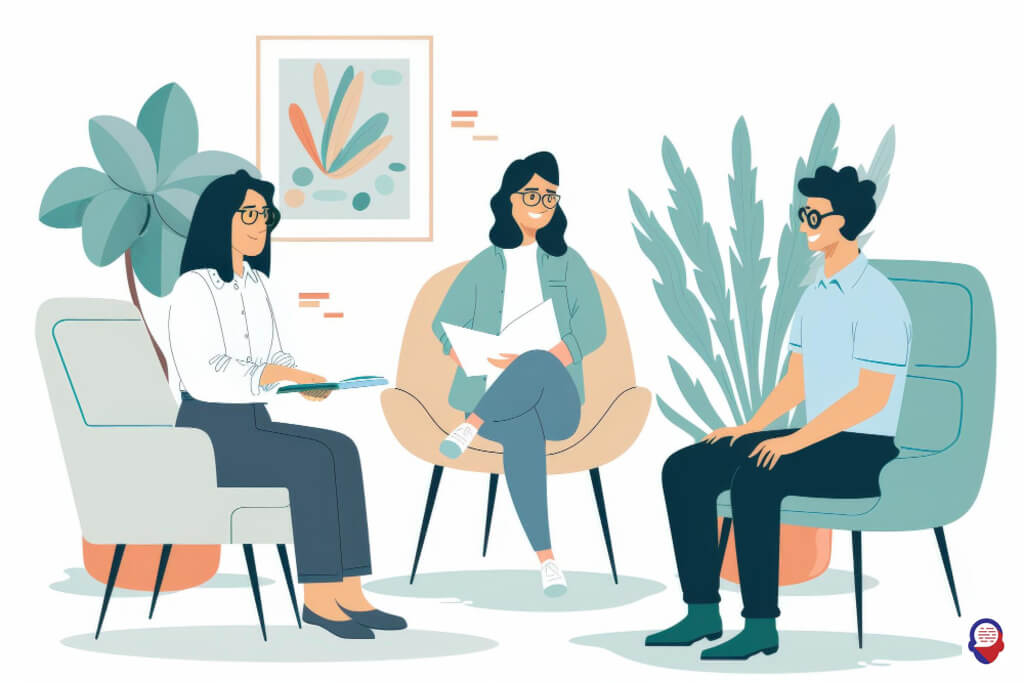Conquer Anxiety and OCD with Exposure Therapy
Imagine a life where fear doesn’t call the shots. A life where intrusive, looping thoughts don’t dictate your day and where you feel a sense of freedom and control. For many people trapped in the grip of anxiety or Obsessive-Compulsive Disorder, this can feel like an impossible dream. But there is a powerful, evidence-based path forward, a form of therapy that doesn’t just talk about your fears, it teaches you how to face them head-on. This therapy is known as Exposure and Response Prevention, or ERP. It is a structured, active, and profoundly transformative approach that has helped countless individuals reclaim their lives from the cycle of fear and compulsion. This comprehensive guide will illuminate what ERP is, how its science-backed methods work, and what you can expect on this courageous journey toward healing.

What Exactly Is Exposure and Response Prevention Therapy?
Exposure and Response Prevention therapy is a specific and highly effective type of Cognitive Behavioural Therapy (CBT). Its primary goal is to help you systematically confront the thoughts, images, objects, and situations that trigger your anxiety, while simultaneously resisting the urge to perform the compulsive behaviours or rituals you normally use to feel better.
The name itself perfectly describes its two-part method. "Exposure" refers to the practice of deliberately and safely facing your fears. "Response Prevention" is the crucial second half, where you make a conscious choice not to engage in the compulsive or avoidant behaviours that have become your go-to coping mechanism. Together, these two components work to break the chains that anxiety has forged. Think of it less like traditional talk therapy and more like active coaching for your brain. It’s a behavioural therapy at its core, built on the principle that to overcome a fear, you must face it.

How Does ERP Work to Reduce Anxiety?
ERP works by directly interrupting the vicious cycle that maintains anxiety and OCD, fundamentally retraining your brain’s response to fear. It operates on proven psychological principles that show your brain that what it fears is not actually dangerous and that the intense anxiety you feel is temporary and manageable without needing a ritual.
This process teaches you a profound truth, your anxiety will decrease all on its own if you just give it time. By staying with the feared trigger without performing a compulsion, you allow your nervous system to naturally calm down. This experience is the key, providing your brain with new, powerful evidence that you are capable and safe, dismantling the fear structure one exposure at a time.

What is the science behind habituation?
Habituation is the core scientific process that makes ERP so effective, referring to the natural reduction in a response after repeated exposure to a stimulus. In simpler terms, your brain gets used to the thing that scares it and stops sounding the alarm.
Imagine a sensitive car alarm that goes off every time a leaf falls on the windscreen. At first, you rush to the window, concerned. But after it happens again and again with no actual threat, you eventually learn to ignore the sound. ERP does something similar for your brain’s fear centre. By repeatedly and safely exposing yourself to a trigger, you teach your brain that the "danger" signal is a false alarm. The intense wave of anxiety you first feel begins to lessen in intensity and duration with each exposure, until the trigger loses its power over you.

How does it challenge distorted beliefs?
ERP directly challenges the catastrophic beliefs and cognitive distortions that fuel anxiety disorders by putting them to the ultimate test. It moves you from the realm of "what if" to the reality of "what is," providing concrete, real-world evidence that your fears are unfounded.
Many anxiety disorders, especially OCD, are driven by powerful beliefs, for example, "If I don’t check the stove ten times, the house will burn down." Talk therapy might discuss how irrational this is, but ERP makes you conduct the experiment. By checking only once and then resisting the urge to check again, you gather direct proof that the house does not, in fact, burn down. This experiential learning is far more potent than simple logic, creating new, stronger neural pathways based on reality rather than fear.

Who Can Benefit From ERP Therapy?
ERP is widely recognized as the gold-standard, first-line treatment for Obsessive-Compulsive Disorder, but its powerful principles are also used to effectively treat a wide range of other anxiety-related conditions. Anyone whose life is limited by avoidance, fear, and repetitive safety behaviours can potentially find profound relief through this therapeutic approach.
If you feel like your world is shrinking, if you spend significant time and energy avoiding triggers or performing rituals, or if you are simply exhausted by the constant battle with your own thoughts, ERP may be the key to unlocking a different way of living. It is designed for those who are ready to do the challenging but rewarding work of facing their fears to regain their freedom.

Is ERP just for OCD?
While ERP is most famously and effectively applied to OCD, its methodology is incredibly versatile and successful in treating other conditions where fear and avoidance are central. It is not a one-trick pony, its principles of exposure and habituation are fundamental to overcoming anxiety in many forms.
Therapists adapt ERP to treat Social Anxiety Disorder, by helping individuals gradually enter feared social situations. It is a cornerstone of treating Specific Phobias, such as fear of flying, needles, or animals. It is also highly effective for Panic Disorder, where exposures might involve intentionally inducing the physical sensations of a panic attack in a safe setting to learn they are not dangerous. Its principles are even integrated into treatments for Post-Traumatic Stress Disorder (PTSD) and Generalized Anxiety Disorder (GAD).

What are the signs I might need ERP?
You might benefit from ERP if you recognize a persistent and disruptive cycle of fear and avoidance in your life. The key indicator is that your attempts to control anxiety are actually making your world smaller and causing significant distress or impairment in your daily functioning.
Consider if you spend more than an hour a day preoccupied with obsessive thoughts or engaging in compulsive behaviours. Are you avoiding important activities, people, or places because of fear? Do your rituals or avoidance patterns interfere with your job, your relationships, or your ability to care for yourself? If your life is organized around appeasing anxiety rather than living according to your values, it is a strong sign that the structured approach of ERP could be incredibly beneficial.

What Should I Expect During an ERP Session?
You should expect a highly collaborative, structured, and active therapeutic experience, very different from unstructured talk therapy. An ERP session is a working session where you and your therapist act as a team, with a clear plan and specific goals for confronting your anxiety in a gradual and manageable way.
The therapist’s office becomes a safe laboratory for you to practice new skills. The process is transparent, you will always know what you are doing and why you are doing it. Your therapist is not a passive listener but an active coach, guiding you, encouraging you, and providing expert support as you learn to navigate and tolerate discomfort without resorting to old safety habits.

How is a treatment plan created?
A treatment plan is developed collaboratively between you and your therapist and is often formalized into a tool called a "fear hierarchy" or an "exposure hierarchy." This is a personalized roadmap for your therapy, created by first identifying all of your specific triggers, obsessions, and related compulsions.
Once you have a comprehensive list, you and your therapist will rate each trigger on a scale of 0 to 100 based on how much anxiety or distress it causes you. This creates a ranked list, from the mildly uncomfortable to the most intensely feared situations. Therapy then begins with exposures from the lower end of the hierarchy, allowing you to build confidence and skills before moving up to more challenging tasks. This ensures the process is always manageable and never overwhelming.

What does an exposure exercise look like?
An exposure exercise involves you intentionally and purposefully confronting a feared situation, thought, or object from your hierarchy. Crucially, during this exposure, you will practice response prevention, meaning you actively resist the powerful urge to perform any of the rituals, compulsions, or avoidance behaviours you would normally use to reduce your anxiety.
For instance, if you have a fear of contamination, an early exposure might involve touching a doorknob and then waiting to wash your hands. Your therapist will be there to guide you, helping you focus on the present moment and notice the rise and fall of your anxiety. The goal is to stay with that discomfort until it naturally begins to subside, a process that provides your brain with the powerful new learning that you can, in fact, handle it.

Will I have homework between sessions?
Yes, homework, or behavioural assignments, is an absolutely essential and non-negotiable part of effective ERP therapy. The progress you make is solidified and generalized to your real life through the practice you do on your own time between your weekly sessions.
Therapy sessions are where you learn the skills and build the courage, but the homework is where you truly reclaim your life. These assignments will be extensions of the exposures you practice with your therapist, tailored to your specific hierarchy. Consistent practice is what turns the lessons of therapy into lasting changes in your brain and behaviour, empowering you to become your own therapist over time.

Is ERP Therapy Difficult or Uncomfortable?
Yes, it is important to be honest that ERP therapy is challenging and will involve experiencing feelings of anxiety and discomfort. The entire premise of the therapy is to face your fears rather than run from them, so a degree of distress is not only expected but necessary for the process to work.
However, it is crucial to understand that this discomfort is purposeful, controlled, and therapeutic. A skilled ERP therapist is an expert at pacing the treatment, ensuring you are challenged but never traumatized. You will work together to decide when you are ready to move up the fear hierarchy. The short-term, manageable discomfort of ERP stands in stark contrast to the chronic, debilitating, and life-limiting suffering of an untreated anxiety disorder. It is hard work, but it is work with a profound purpose, to win back your freedom.

How Do I Find a Qualified ERP Therapist?
Finding a genuinely qualified ERP therapist requires looking beyond general credentials and seeking out a mental health professional with specific, documented training and supervised experience in this specialized modality. You are looking for a specialist, not a generalist who simply lists "CBT" as one of many offerings.
Your search should focus on licensed professionals like clinical psychologists, psychiatrists, or licensed professional counsellors. The key is to then inquire directly about their expertise in ERP. A true ERP specialist will be able to speak confidently and in detail about their approach, their training, and their experience treating conditions like yours.

What qualifications should I look for?
When vetting a potential therapist, you should look for specific training in Exposure and Response Prevention. Ask direct questions that go beyond a simple "yes" or "no." Inquire about where they received their ERP training, how much of their current caseload involves ERP, and what their typical treatment structure looks like for a client with your concerns.
A well-qualified therapist will welcome these questions and be able to clearly explain concepts like habituation, inhibitory learning, and the creation of an exposure hierarchy. Be wary of anyone who is vague or suggests that ERP is simply about "thinking positively" or who seems to focus exclusively on relaxation techniques. True ERP is an active, behavioural intervention that requires specific expertise to be delivered safely and effectively.

Why is a specialist so important?
A specialist is critically important because ERP, when done incorrectly, can be ineffective or, in some cases, even make anxiety worse. A therapist without proper training might push a client too hard, too fast, leading to a traumatic experience rather than a therapeutic one. They may also miss subtle compulsions or avoidance strategies that are undermining the entire process.
An ERP specialist understands the precise art and science of this therapy. They know how to construct a proper hierarchy, how to coach a client through peak anxiety, how to time the exposures correctly, and how to identify and block the mental and physical rituals that maintain the fear cycle. Choosing a specialist ensures you are investing your time, courage, and resources in a process that has the highest probability of success.
Frequently Asked Questions

How long does ERP therapy usually take?
The duration of ERP therapy can vary significantly from person to person, depending on factors like the complexity and severity of the condition, as well as the client’s commitment to practicing homework. However, for many individuals with OCD or other anxiety disorders, a standard course of ERP is often between 12 and 20 weekly sessions. Some people may require a longer period of treatment to achieve their goals, while others with more specific or less severe issues might see significant progress more quickly.

Can ERP be done online?
Yes, ERP can be conducted very effectively through online teletherapy. Numerous studies and clinical reports have shown that virtual ERP sessions produce outcomes that are comparable to in-person therapy. For many, teletherapy is even more advantageous, as it allows you to do exposures in your own home environment where many triggers exist, making the therapy more immediate and relevant. It also increases access to specialized ERP therapists who may not be located in your immediate geographic area.

What if my fear is a purely mental obsession?
ERP is exceptionally well-suited for treating "Pure O," or purely obsessional OCD, where the compulsions are primarily mental rituals rather than observable behaviours. In these cases, exposures are designed to target the intrusive thoughts directly. This can involve creating "imaginal exposures," where you write out detailed scripts about your feared thoughts or scenarios and read them repeatedly. It can also involve using audio recordings of your own voice describing the fears, listening to them until the thoughts lose their emotional power and the urge to perform a mental ritual, like thought-neutralizing or checking, subsides.

Is medication necessary with ERP?
Medication is not always necessary, as ERP is a powerful and effective standalone treatment for many people. However, for some individuals, particularly those with severe symptoms, combining ERP with medication can be a highly effective strategy. Medications like Selective Serotonin Reuptake Inhibitors (SSRIs) can help to lower the overall baseline level of anxiety and depression, which can make it easier for a person to engage with the challenges of exposure therapy. The decision to use medication is a personal one and should be discussed thoroughly with your therapist and a qualified medical professional, such as a psychiatrist or your GP.
Taking the first step is often the most courageous part of any healing journey. If you are tired of your life being dictated by anxiety, intrusive thoughts, and compulsive behaviours, you do not have to continue fighting this battle on your own. At Counselling-uk, we are dedicated to providing a safe, confidential, and professional place to get advice and help with your mental health. We believe in offering support for all of life’s challenges. Reach out today to connect with a qualified therapist and begin the powerful work of reclaiming your life from fear.



By following these tips, you can make sure that your ERP therapy sessions are as successful as possible. Remember – it takes time and patience but it’s worth it in the end!
Common Techniques Used in ERP Therapy